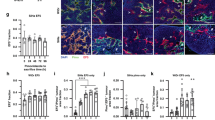Abstract
THE American Cancer Society estimates that 250,000 people in the United States will die from cancer in 1974 and it has been speculated that 100,000 of them will die because of failure to control the primary tumour site1. In the report of a 1972 conference on particle accelerators in radiation therapy Bagshaw said: “… perhaps the most critical factor in determining success or failure in the sterilisation of a localised neoplasm with standard megavoltage radiation is the state of oxygenation of the cells being irradiated …”2. Cells which are poorly oxygenated when irradiated are more resistant to conventional X radiation than those which are well oxygenated. Many tumours are hypoxic and thus may be more resistant to radiation than the well oxygenated surrounding normal tissue. Considerable time and effort have been expended during the past decade in attempts to circumvent this problem. Efforts are currently focused on the use of heavy particles. We now have data suggesting that hyperthermia in conjunction with standard megavoltage radiation may present an alternative for circumventing the oxygen problem.
This is a preview of subscription content, access via your institution
Access options
Subscribe to this journal
Receive 51 print issues and online access
$199.00 per year
only $3.90 per issue
Buy this article
- Purchase on Springer Link
- Instant access to full article PDF
Prices may be subject to local taxes which are calculated during checkout
Similar content being viewed by others
References
'74 Cancer Facts and Figures, 3 (American Cancer Society, New York, 1974).
Bagshaw, M. A., in Particle accelerators in radiation therapy (LA–5180–C) 17–20 (Los Alamos Scientific Laboratory of the University of California, 1972).
Robinson, J. E., Wizenburg, M. J., and McReady, W. A., Radiology (in the press).
Till, J. E., and McCulloch, E. A., Radiat. Res., 14, 213–222 (1961).
Bond, V. P., Am. J. Roent. Radiat. Ther. Nuc. Med., 111, 9–27 (1971).
Fowler, J. W., in Particle accelerators in radiation therapy (LA–5180–C) 28–38 (Los Alamos Scientific Laboratory of the University of California, 1972).
Raju, M. R., Gaanapurani, M., Martins, B. I., Howard, J., and Lyman, J. T., Radiology, 102, 425–428 (1972).
Author information
Authors and Affiliations
Rights and permissions
About this article
Cite this article
ROBINSON, J., WIZENBERG, M. & MCCREADY, W. Combined hyperthermia and radiation suggest an alternative to heavy particle therapy for reduced oxygen enhancement ratios. Nature 251, 521–522 (1974). https://doi.org/10.1038/251521a0
Received:
Issue Date:
DOI: https://doi.org/10.1038/251521a0
This article is cited by
-
Review article laser-induced hyperthermia on graphene oxide composites
Journal of Nanobiotechnology (2023)
-
p53 dynamics in single cells are temperature-sensitive
Scientific Reports (2020)
-
Numerical Investigation of Magnetic Nanoparticles Distribution Inside a Cylindrical Porous Tumor Considering the Influences of Interstitial Fluid Flow
Transport in Porous Media (2017)
-
Cell Death Discrimination with Raman Spectroscopy and Support Vector Machines
Annals of Biomedical Engineering (2009)
-
Cellular radiation effects and hyperthermia cell cycle kinetics of radiation sensitive mutants of Saccharomyces cerevisiae after X-irradiation and hyperthermia
Radiation and Environmental Biophysics (1983)
Comments
By submitting a comment you agree to abide by our Terms and Community Guidelines. If you find something abusive or that does not comply with our terms or guidelines please flag it as inappropriate.



